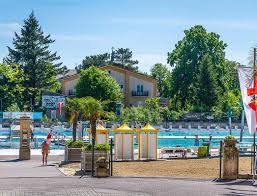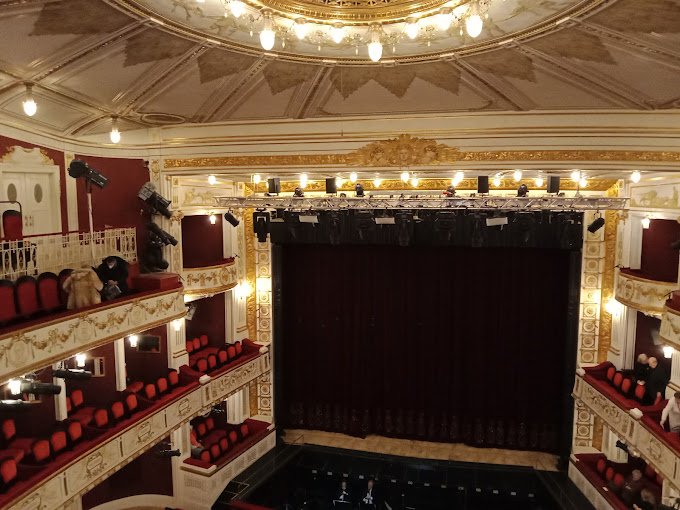Baden bei Wien is a district spa town in Austria, in the federal state of Lower Austria, the seat of the Baden district. It has 25,229 inhabitants (January 1, 2014). It is located about 26 km south of Vienna, on the Schwechat River, a tributary of the Danube. In 2021, the city – as one of the great spa towns of Europe – was included on the UNESCO World Heritage List.

- Thermalstrandbad Baden is one of the largest water parks in Austria, covering a total area of 25,000 m2. There is a thermal bath – two pools with sulphur water and two classic pools. Water attractions such as slides, diving towers and a children’s pool have been created here.

- Casino Baden. It is a unique casino that combines the opportunity to test your luck in numerous games and take advantage of a rich restaurant offer surrounded by a historical atmosphere. The building in which the casino is located dates back to the late 19th century, and its architectural decorations allow for playing in an extraordinary atmosphere. The building was built during the reign of Emperor Francis I, who after the procedure decided to make Baden a popular resort and a place of summer recreation for the aristocracy and bourgeoisie. For this purpose, a new spa in the Renaissance Revival style was built in the place of the former resort. The interior of the building is decorated with works such as a 19th-century fresco by Professor Hans Zatzka and fountains from the first half of the 20th century by Manfred Welte. Each of the fountains presents a different material used to make or decorate it: illuminated trumpets, glass balls and granite with a rotating element.

- Spa Park. The park was created in 1792 in honor of Empress Maria Theresa. The area of 52 hectares is maintained in the English style. It is decorated with, among others, a monument to Franz Joseph and a fountain dedicated to the heroine of the 19th-century fairy tale “Undina”. In the summer, concerts and performances are held here.

- The rose garden is located in the Doblhoffpark, located about 15 minutes’ walk from the train station in Baden. The park has an area of just over 8 ha, and in addition to the rose garden, you will also find here, among other things, a baroque orangery, a pond with boats and playgrounds. Historically, these were the palace gardens of Weikersdorf Schloss, which today houses a hotel and spa, but since the 1960s the park has been taken over by the commune, where a decision was made to create an organized rose garden. The Baden rose garden is the largest rose garden in Austria. I can find quite divergent numbers on the Internet, although the sources seem to be quite official… 😉 So we can see about 25-30 thousand roses here, from about 800-900 different species. And all this on the area of the rose garden, which is less than 100,000 m². Most roses bloom at the turn of May and June, but there are also species that we can admire in summer and even autumn (the garden invites guests even in October).

- The Municipal Theatre is famous for having one of the best operetta stages in the world. The history of the theatre in Baden dates back to 1716, when a professional stage began operating. Baden, as a spa town, was often visited by spa guests, as well as the imperial family, who sought high-class entertainment in the city. The first theatre building was built in 1755.

- The synagogue was rebuilt in 2005.

Baden bei Wien is a city and a popular spa resort in Austria, located on the Helenental River about 25 kilometers south of Vienna. The beneficial properties of the local thermal waters were already known and used in ancient times. This is evidenced by the remains of Roman baths in the city. In the Middle Ages, during the times of its greatest glory, such personalities as Emperor Francis II of Habsburg, Beethoven, Schubert, Mozart and Franz Joseph Haydn came to Baden for health purposes. Currently, Baden bei Wien is a spa resort, where 14 sulfur springs are available to spa guests. With tourists in mind, the former spa house has been transformed into a casino and a modern congress center. Many historic buildings have also been preserved in the city. The most interesting of them include the Gothic church of St. Stephen (Pfarrkirche St. Stephan), the 13th-century Weikersdorf Castle (rebuilt at the turn of the 16th and 17th centuries), the Baroque Holy Trinity Column on the main market square, the Municipal Theatre, the 12th-century Leesdorf Castle, Mozart’s house and numerous burgher houses and tenement houses.
